When Clouds Collide: The Intersection of Creative Design and Marketing Data

Sara Dietschy grew her YouTube channel from 4,000 to 100,000 subscribers in a month, and now boasts nearly 160,000. As an Adobe Creative Resident, Sara has taken the past year to refine her online persona and pursue new mediums to share her creative work. While her work is that good, her growth is not merely organic. She has relentlessly worked to amplify her online presence with platform-specific growth tactics.

Sara is a great example of someone who successfully bridges the gap between creativity and marketing. She creates engaging content for her YouTube and other social media channels, but she also understands what her audience wants because she knows how to track and interpret the analytics of her outreach. For creatives, pursuing the convergence of content and data is smart - and it's having an impact.
Wanted: Creatives with data and technology skills.
The hybrid creative-marketer is becoming more common. In fact, the 2017 Advertising report from Adobe Digital Insights shows jobs requiring marketing technology skills accounted for 32 percent of creative job listings at the end of 2016. And interest in creative jobs requiring data and technology skills is growing twice as fast as traditional creative roles.
Designers informed by customer insights are thought partners working side by side with marketers. And when creative ideas and marketing data inform one another, businesses build the types of customer experiences needed to excel in today's markets.
Several trends are influencing the convergence of creative and marketing technology skills.

The rise of experience-obsessed businesses. Consumers today define a company's value by the experiences they have with that company. Design is key to creating those experiences, and data fuels effectiveness. Unlike in the past, where products mattered most, an organization's success now depends on the type of experience they deliver to their customers. As companies shift to cloud-based business models, the stakes rise even more.
These "always-on" models have to provide an experience that keeps customers renewing monthly, quarterly or annual subscriptions. That means every experience has to be just right. Companies that "get it" stick around; those who don't, fail quickly. To be one of the successful companies, you constantly need to be connected to your customers, regularly adding value to your relationship so there is never a question of renewal.
The democratization of communication. Thanks to the Internet and social media platforms, everyone has a voice. Brands are competing not only with market peers, but also with every other voice for an opportunity to be seen and heard by their customers. To truly speak to today's customer, marketers need to design their messages for impact, and design professionals must look at the data to see which messages cut through the noise.
Personalization plays a critical role in designing for experience. As we found with the ADI research, as much as 57 percent of the 18-34 year old population prefer personalization in their interaction with marketers, but 31 percent of those say that the current level of personalization doesn't go far enough. This presents an opportunity for creative content that stands out by matching the message and method to the recipient.
The democratization of data. As marketers, we know more about our audiences than ever before and we've become infatuated with data. The other day I noticed my 7-year-old nephew reviewing which photos were getting more engagement on his mother's Facebook feed. With such widespread accessibility of tools, marketers need to up their game or fall behind. If you're not using analytics to inform your design, you're behind the curve.
Another example of using data to deliver on customer expectations has come through our own development of Adobe XD - a new prototyping tool that is built with input from our design community. Feedback on even the earliest prototypes wasn't limited to internal teams or even a discrete customer set. We made pre-release versions available to anyone, provided monthly updates and gathered feedback through several channels - all with the purpose of giving everyone a voice in the direction of the product to ensure we meet the evolving needs of UX designers.
Now more than ever, brands are relying on creatives to help solve customer problems. They do this by designing not just how things look, but also how they work - especially for the customer. Creative inspiration must begin from a foundational understanding of who the customer is and what they need, and those insights are found in the data. Brands like Twitter, Spotify and WhatsApp lead in this category with products that work the way customers want and expect - replacing transactional design with experience-led design.
The case for integration.
The effort of creatives to deliver the right content is complicated by the current fragmentation of the experience business. Freelance jobs attract 2.3 times the interest of other job types, and ADI research indicates that 42 percent of digital marketers work with three or more creative agencies. Similarly, 44 percent work with three or more analytics platforms, and roughly 40 percent have three or more media-buying, media-planning, and/or data management platforms. This presents another opportunity in the form of integration.
Success depends on the ability to deliver these meaningful customer experiences. Marketing and design are no longer discrete functions; their combined force is the foundation for an experience-based business.
About the Author
 Mala Sharma is vice president of the
Creative Cloud business and marketing at Adobe. She practices a mindful approach to business, and is passionate about building self-worth through creativity and education.
Mala Sharma is vice president of the
Creative Cloud business and marketing at Adobe. She practices a mindful approach to business, and is passionate about building self-worth through creativity and education.
Subscribe to Our Newsletter!
Latest in Software








